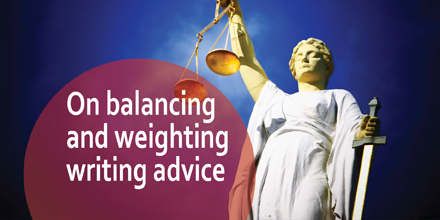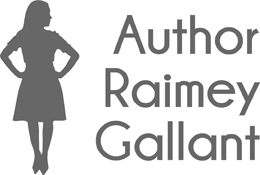The last two and a half years of my life have been a kind of painful hell. It took some doing, but I’m currently being worked up for a chronic Lyme diagnosis, and I’m finally getting treatment as a result, but my path out of pain is non-linear and uncertain. Now you have context for why I wrote this non-exhaustive list of writing advice that has a ring of ableism to it. Click the title above to continue reading.
Tag: writing advice
Investigating writing advice given in absolutes #AuthorToolboxBlogHop
Once upon a time, I decided to write fiction. I consumed as many sources of craft advice (agent blogs, how-to-write books, author Twitter threads, etc.) as I could find. That advice often came in absolutes, as in, always write a certain genre in a certain tense, never start a story with a character waking up, and definitely don’t ever use -ly adverbs. Click the title above to continue reading.
How to create atmosphere in a scene through parallel action #AuthorToolboxBlogHop
There’s a scene in Gillian Flynn’s Sharp Objects that gave me goosebumps, except the action responsible for said goosebumps had nothing to do with the plot. Click the title above to continue reading.
The value in reworking your metaphors #AuthorToolboxBlogHop
Have you ever noticed, when reading a metaphor, that the idea is solid, but the execution hasn’t quite hit the mark? And when I say metaphor, I’m referring to all subcategories of metaphorical language (simile, metaphor personification, etc.) For this post, I’ve decided to take early drafts of some of my own metaphors from my current novel, describe what wasn’t working, and then you can compare it to the revision. My hope is that this will help other writers identify issues with their own metaphorical language and rework accordingly. Click the title above to continue reading.
My Microsoft Word manuscript template for authors (#IWSG Blog Hop)
A few chapters into my first book, I got fed up with all the scrolling. Many authors use apps such as Scrivener to more easily move between chapters and scenes. Scrivener has many other functions, but I prefer working in Microsoft Word. I decided to take advantage of Word’s table, linking, and formula functions, and the result is a template, that after much tinkering, does everything I need it to do. Click the title above to continue reading and to find the template.
How to spice up setting with an event (#IWSG blog hop)
In Jessica Strawser’s debut Almost Missed You, two characters have a life-changing date at Cincinnati’s Lumenocity, an orchestra-curated light-show. Anyone remember the scene when Harrison Ford’s Richard Kimble slips into Chicago’s St. Patrick’s Day Parade to evade pursuers? How much more exciting does Pride and Prejudice become once the Bennett sisters have a ball to look forward to? Some of these events are more integral to plot than others, but all of them make the stories they’re included in more interesting as a result. Click the title above to continue reading.
Authors, read for what irks you (#IWSG Blog Hop)
Easily avoidable misunderstandings as a device to create conflict, whether reading or watching it, I dislike this so much, it elicits an eye roll from me every time. The conflict just doesn’t feel logical. And because I’m aware that I don’t like this, I’m (hopefully) careful not to let this or any other of my literary pet peeves happen in my own writing. Click the title above to continue reading.
On balancing and weighting writing advice (#IWSG Blog Hop)
You’re stuck on a question about how to use a writing device, and off to the Internet/library/bookstore you go. Perhaps you stop after article number one, thinking certainly this must be the definitive answer, because this publishing professional has game to spare. She may well, but still your search should continue. Why? Click the title above to continue reading.
2 foreshadowing techniques to reduce new information overload #AuthorToolboxBlogHop
Reading a book is like jumping on an exercise bike for the brain. The reason is because every sentence is a piece of information the reader needs to process. Some sentences are easier to absorb than others. For instance, a sentence that speaks about characters, themes, and plots the reader has already gotten to know doesn’t require as much processing as a sentence introducing new characters, sub-themes, or subplots. We want readers to keep pedaling and processing this new information, but as so often happens in books, there comes a point when the reader decides to take a break. Click the title above to continue reading.
On Plotting: intentional versus unintentional creative thinking time (#IWSG Blog Hop)
A creative writing teacher gave my class some advice I’ll never forget: when it comes to story ideas, it’s best to ride around on the bus with it. In other words, take time to process and decide if it’s the best story and/or story direction. In my mind, there are two types of riding-around-on-the-bus-with-it: intentional and unintentional. Click the title above to continue reading.










